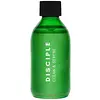What's inside
What's inside
 Key Ingredients
Key Ingredients

 Benefits
Benefits

 Concerns
Concerns

 Ingredients Side-by-side
Ingredients Side-by-side

Quartz
AbrasiveAloe Barbadensis Leaf Powder
Skin ConditioningXanthan Gum
EmulsifyingGlycerin
HumectantQuillaja Saponaria Bark Extract
CleansingCocamidopropyl Betaine
CleansingCitric Acid
BufferingSodium Benzoate
MaskingPotassium Sorbate
PreservativeCitrus Grandis Fruit Extract
AstringentCucumis Melo Fruit Extract
Skin ConditioningBenzoic Acid
MaskingSorbic Acid
PreservativeCarica Papaya Fruit Extract
Skin ConditioningPhenoxyethanol
PreservativeCitrus Grandis Peel Oil
MaskingQuartz, Aloe Barbadensis Leaf Powder, Xanthan Gum, Glycerin, Quillaja Saponaria Bark Extract, Cocamidopropyl Betaine, Citric Acid, Sodium Benzoate, Potassium Sorbate, Citrus Grandis Fruit Extract, Cucumis Melo Fruit Extract, Benzoic Acid, Sorbic Acid, Carica Papaya Fruit Extract, Phenoxyethanol, Citrus Grandis Peel Oil
Water
Skin ConditioningCoco-Betaine
CleansingGlycerin
HumectantPropanediol
SolventCaprylyl/Capryl Glucoside
CleansingAcrylates/C10-30 Alkyl Acrylate Crosspolymer
Emulsion StabilisingSodium Hyaluronate
HumectantSodium Gluconate
Skin ConditioningAloe Barbadensis Leaf Juice Powder
Skin ConditioningCaprylyl Glycol
EmollientPhenoxyethanol
PreservativeSodium Hydroxide
BufferingCocamidopropyl Betaine
Cleansing
 Reviews
Reviews

Ingredients Explained
These ingredients are found in both products.
Ingredients higher up in an ingredient list are typically present in a larger amount.
Cocamidopropyl Betaine is a fatty acid created by mixing similar compounds in coconut oil and dimethylaminopropylamine, a compound with two amino groups.
This ingredient is a surfactant and cleanser. It helps gather the dirt, pollutants, and other impurities in your skin to be washed away. It also helps thicken a product and make the texture more creamy.
Being created from coconut oil means Cocamidopropyl Betaine is hydrating for the skin.
While Cocamidopropyl Betaine was believed to be an allergen, a study from 2012 disproved this. It found two compounds in unpure Cocamidopropyl Betaine to be the irritants: aminoamide and 3-dimethylaminopropylamine. High-grade and pure Cocamidopropyl Betaine did not induce allergic reactions during this study.
Learn more about Cocamidopropyl BetaineGlycerin is already naturally found in your skin. It helps moisturize and protect your skin.
A study from 2016 found glycerin to be more effective as a humectant than AHAs and hyaluronic acid.
As a humectant, it helps the skin stay hydrated by pulling moisture to your skin. The low molecular weight of glycerin allows it to pull moisture into the deeper layers of your skin.
Hydrated skin improves your skin barrier; Your skin barrier helps protect against irritants and bacteria.
Glycerin has also been found to have antimicrobial and antiviral properties. Due to these properties, glycerin is often used in wound and burn treatments.
In cosmetics, glycerin is usually derived from plants such as soybean or palm. However, it can also be sourced from animals, such as tallow or animal fat.
This ingredient is organic, colorless, odorless, and non-toxic.
Glycerin is the name for this ingredient in American English. British English uses Glycerol/Glycerine.
Learn more about GlycerinPhenoxyethanol is a preservative that has germicide, antimicrobial, and aromatic properties. Studies show that phenoxyethanol can prevent microbial growth. By itself, it has a scent that is similar to that of a rose.
It's often used in formulations along with Caprylyl Glycol to preserve the shelf life of products.